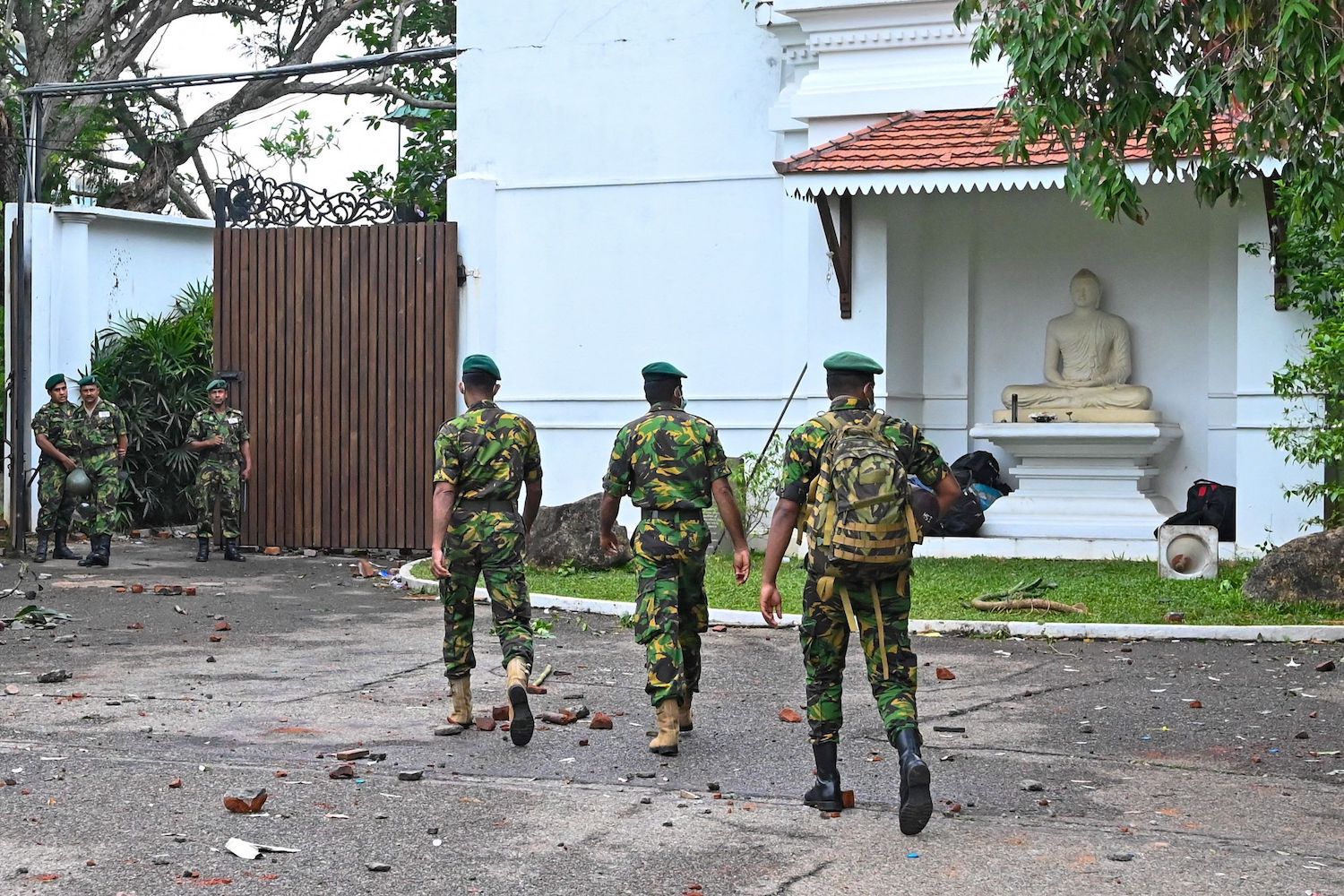by Michael, Kugelman, Foreign Policy’s South Asia Brief, Washington, DC, May 12, 2022
 |
For months, anti-government protesters in Sri Lanka have railed against skyrocketing inflation and an economic crisis that has nearly exhausted Sri Lankan foreign reserves. They have demanded the resignations of President Gotabaya Rajapaksa and his brother Mahinda, who stepped down as prime minister on Monday. Although the mass protests have been intense, they have largely remained peaceful—which makes this week’s surge in violence troubling.
The violence began on Monday when government supporters attacked anti-government protesters, escalating tensions and prompting retaliatory attacks. A ruling party lawmaker was killed during an attack by a mob, and rioters torched politicians’ homes. The protesters’ main source of ire, the Rajapaksas, have also found themselves under threat: People stormed Mahinda Rajapaksa’s compound after his resignation, and the family’s ancestral home was set on fire.
Sri Lanka’s government blames the economic crisis on coronavirus pandemic-induced shocks, but its origins can be blamed on a raft of bad economic decisions going back more than 20 years, from taking on too many loans to cutting taxes. Those early mistakes, taken with Rajapaksas at the helm, made Sri Lanka’s economy especially vulnerable to the pandemic and recent oil price spikes. The economic strain is further exacerbated by the political crisis—which won’t end anytime soon, despite the prime minister’s resignation.
As Sri Lanka’s 26-year civil war came to an end in 2009, Mahinda Rajapaksa—then the president—oversaw a post-conflict reconstruction effort marked by heavy investments in infrastructure, but less in tradeable goods. This development required loans that indebted an economy fragile from years of war, as Sri Lankan economist Dushni Weerakoon explained in Foreign Affairs. The government attempted to use foreign exchange earnings to pay it off, but commercial debt increased from 7 percent in 2006 to 55 percent in 2019.
In 2019, newly elected President Gotabaya Rajapaksa cut taxes, leaving the government with insufficient revenue when the pandemic began. The hit to tourism did further damage: The tourism industry’s contribution to GDP fell from 5.6 percent in 2018 to 0.8 percent in 2020. But the government still spent heavily, resulting in a currency depreciation. A 2021 ban on chemical fertilizer reduced agricultural yields, contributing to rising food costs.
Anti-government protesters are angry about political leaders’ failure to rein in the exorbitant prices of essential goods. But their demonstrations should also be read against the backdrop of years of economic mismanagement. For many Sri Lankans, the government’s heavy-handed response to the protests—although unsurprising—has been the final straw. Troops have been deployed in the capital with orders to shoot anyone involved in violence.
Likewise, Mahinda Rajapaksa’s resignation won’t appease the protesters; they are demanding that Gotabaya go too. The president has instead proposed that he oversee a unity government. On Thursday, Ranil Wickremesinghe was sworn in as prime minister; he has already served in the office five times for the opposition. Wickremesinghe doesn’t enjoy broad-based support within the opposition or among the public. He is thought to be close to the Rajapaksas, and his appointment may do little to ease political instability.
When the government does return its focus to the economy, it will likely pursue an International Monetary Fund (IMF) package that requires austerity, meaning more hardship. Such measures would be more acceptable to the public with a more palatable government in power, but that would mean a new interim government, Gotabaya Rajapaksa’s resignation, and early elections. None of that appears to be in the cards, given the president’s refusal to step down.
Sri Lanka could also get a boost if the pandemic subsides, allowing tourism revenue to resurge, and if the global oil price surges bring spikes in remittances from the Sri Lankan diaspora, many of whom work in oil-producing Persian Gulf states. The benefits of such outcomes may be tempered by the consequences of austerity measures that come with a new IMF package.
No matter what comes next, this much is true: The Sri Lankan government may eventually fall, but the Rajapaksa dynasty isn’t about to end, even if it’s dramatically weakened. The Rajapaksas are too powerful, and Sri Lanka’s opposition is divided. Even if the country manages to rescue its economy, the political environment will remain hyperpolarized.
For more the crisis in Sri Lanka, our next FP Live discussion on Friday, May 13, at 11 a.m. EDT. FP editor in chief Ravi Agrawal hosts Atul Keshap, a former U.S. ambassador to Sri Lanka under the Obama administration and now the president of the U.S.-India Business Council, for an in-depth conversation about what comes next for Sri Lanka. FP subscribers can register here.